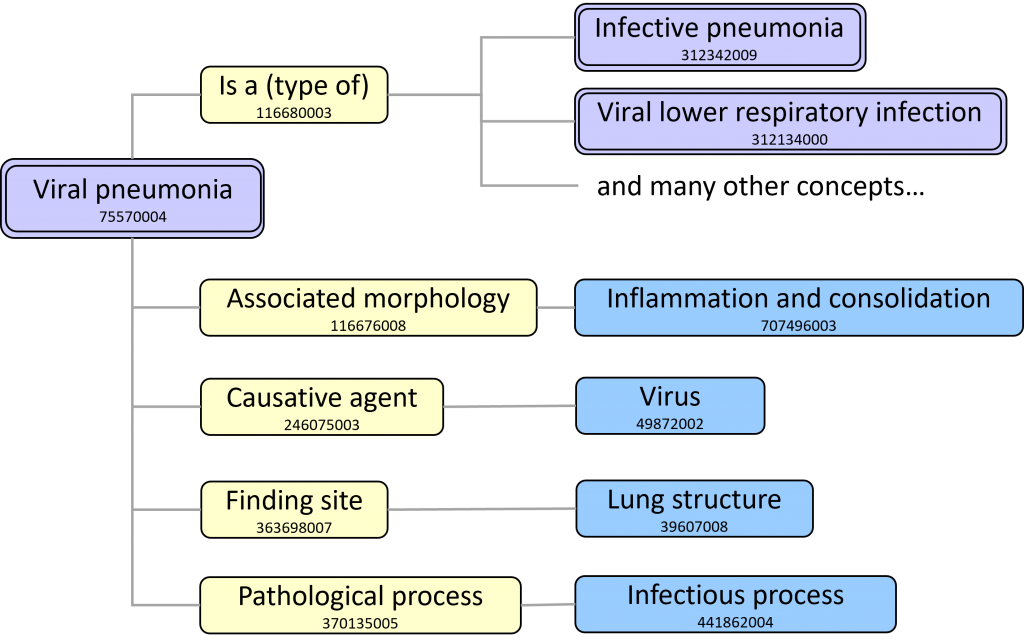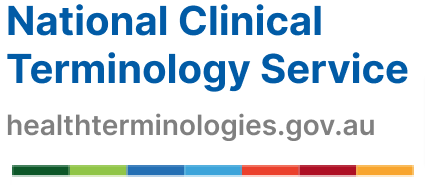What is clinical terminology?
Clinical terminology means a comprehensive set of standardised, linked medical terms that can be used in clinical software applications.
- On this page:
- Video: New to clinical terminologies?
- Recording structured, consistent healthcare information
- Why clinical terminology is important
- Who’s impacted by clinical terminologies
- Our goal: clinical software throughout Australia that ‘speaks the same language’
Video: New to clinical terminologies?
Video: New to clinical terminologies? This short (2 minute) animation explains the National Clinical Terminology Service and why a standard clinical terminology is important.
Recording structured, consistent healthcare information
When we talk about clinical terminology we mean a comprehensive set of standardised, linked medical terms that can be used in clinical software applications.
Clinical terminology enables people to record information relevant to healthcare in a structured, consistent way. Information relevant to healthcare includes:
- diseases
- medicines
- operations
- tests
- treatments.
In clinical terminology, medical terms are coded and linked. These links create meaning and enable computers to automatically interpret data entered by health professionals. This makes clinical terminology a powerful tool for supporting clinical decision-making and reporting.

Why clinical terminology is important
Words can have multiple meanings.
Take the word ‘cold’ for example. It can mean:
- common cold
- cold (sensation/temperature)
- COLD (chronic obstructive lung disease)
Clinical terminologies ensure that software captures and shares consistent information. As a patient moves through the health system seeing different health professionals, clinical terminologies enable information about a patient’s health to be shared electronically and to have a consistent meaning.

In action
A GP prescribes a medicine and issues an electronic prescription. A pharmacist scans the prescription and dispenses the correct medicine. Clinical terminology is a critical part of the digital health ecosystem that makes this possible.
Who’s impacted by clinical terminologies
You and me
Clinical terminologies impact every Australian. Every time you visit the doctor, the doctor creates a record describing your health problem. They create the record with software that uses clinical terminology.
Professionals
Clinical terminology impacts professionals who use clinical software in their day-to-day work. These people work in:
- hospitals
- primary care settings
- community pharmacies
- pathology providers
- research institutions focused on health
- government agencies focused on health.
Software vendors and managers in healthcare organisations
Software vendors and managers in healthcare organisations can have the greatest influence on the use of clinical terminologies in Australia.
They can choose to develop, upgrade or procure clinical software that includes:
- a clinical terminology that has been endorsed within Australia, such as SNOMED CT-AU
- a specific classification that covers on area, such as diagnoses or medicines
- a proprietary code set (developed and owned by a company).
SNOMED CT-AU is the Australian edition of SNOMED CT. It’s the preferred national terminology for Australia and it’s been endorsed by all Australian state and territory governments. Choosing SNOMED CT-AU will ensure interoperability. This means health information entered into the software can be shared more readily within Australia’s digital health ecosystem.
See The big picture: SNOMED CT-AU and other code sets.
Our goal: clinical software throughout Australia that ‘speaks the same language’
When different clinical software applications ‘speak the same medical language’ (use the same clinical terminology) there are many benefits. These include:
- health information can be made available whenever and wherever it is needed
- health information can be exchanged securely between software applications (this is called interoperability)
- high-quality data with a commonly understood meaning can be used with confidence.
Read more about the benefits of using clinical terminology.
When clinical software throughout Australia ‘speaks the same language’ it will lead to better healthcare for all Australians.
See also:
Benefits
Uses
Considering implementing
SNOMED CT-AU?
Healthcare providers and software vendors: please get in touch so we can advise on the best approach.

Email
help@digitalhealth.gov.au

Call 1300 901 001
8am – 5pm (AEST/AEDT), Monday – Friday

